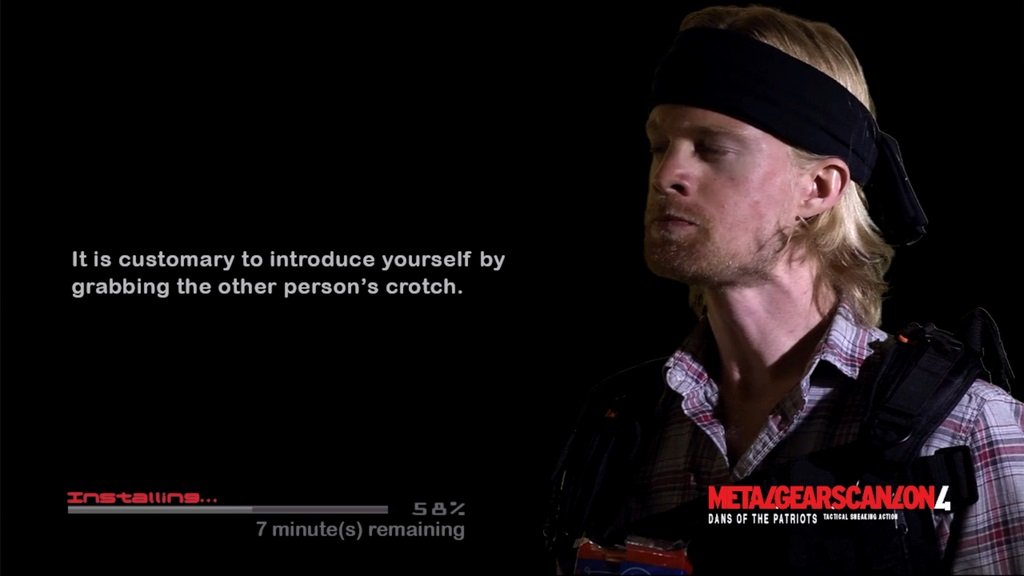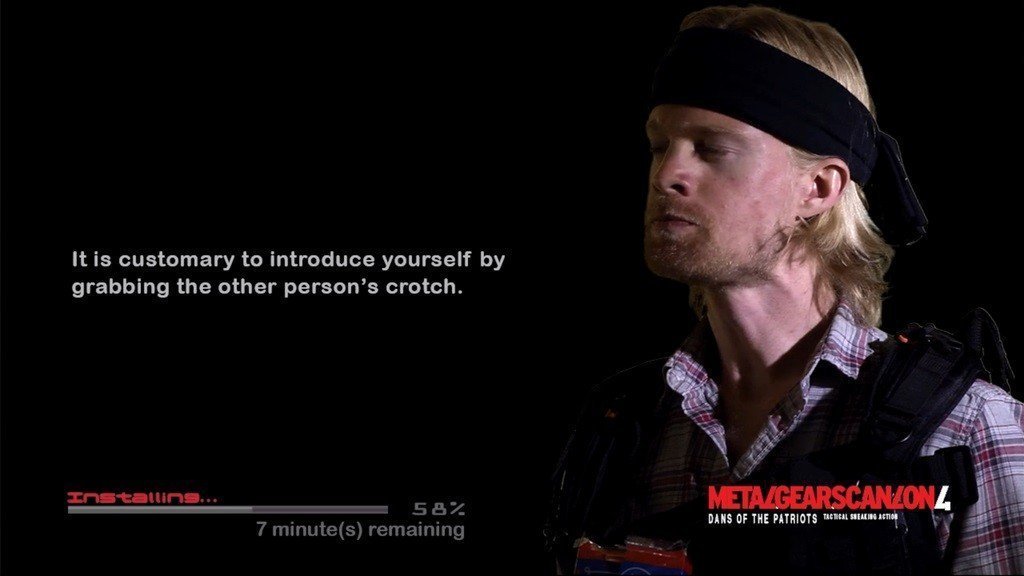
“Customary ‘Ways’ To Introduce Yourself” –JD Richgels
“You’ve returned? Kept you waiting huh?”
WHY HELLO EVERYONE!
Welcome back to ‘The Blog’. In light of the recent attack, and victory, of ‘The Blogs’ we now commemorate our new overlords with supplemental reading! Because…you know…ruling the world can be a little boring…that’s a thing right?
Anyways, today we are discussing the writings of Mary Hamilton and the idea of “Situated Literacies”. This presents the idea of literacy in context like placement, audience, time period, intention, etc. In the article Hamilton cites photographs as one of the best example of a “Situated Literacy” since it can capture an example of literacy in context, i.e. people reading newspapers on the bus. Ironically, this same kind of capture of a running gag, or an image that a group can identify with, would be a predecessor to the modern day ‘meme’.
‘Memes’ are an extremely powerful form of a ‘Situated Literacy’. Simplistic at first glance, memes can seem relatively small and randomized, however, further digging into a memes conception can then turn into layers upon layers of references and context to multiple ‘mini-cultures’, or ‘categorized’ audiences. For example, the meme “Keep Calm and…” has now grown to such length that it has become recognizable to this generation and a few of those following. Even if the reaction is not positive, like a groan or snort when seeing it, these individuals are taking part in a ‘unification’ of an entire group of individuals who identify with that image. This hasn’t been a recent development either. A ‘simple’ meme today can ‘unify’ a group as much as the saying “One small step for man, one giant leap for mankind”, can as well. Whether that generation was aware or not, one sentence became a part of their identity. It became a part of their image and is something we recognize even if it were phased into the background of a generation, it now exists as a part of society. This is true with the meme “Keep calm and…” which has now, for better or worse, become a piece of our generation’s identity, a footnote in our history.
This, FINALLY I know, brings us to Hamilton’s article. The ‘sentence’ I chose to relate to my image is on page 29 in the very first paragraph, “There was a great deal of literacy in the background environment of the images which was not directly referred to in the narrative of the news item. In some cases it is obvious that the literacy elements had been intentionally included in the image, to identify people, locations and affiliations. In other cases they appear to be entirely incidental” (Hamilton 29). This ‘sentence’ is basically telling us how pieces of an image are picked up on by differing individuals. The news may have not caught specific literacies in their own images, but others will and they will do so because they identify with that piece. Hamilton even points out that the news agency was doing it on purpose, most likely so they could have a wide range audience, multiple ‘mini-cultures’, to identify with image and therefore create a connection with the agency. It’s used here as a way to get an audience’s attention, and to probably increase views. Specific people will look at the images, identify to a specific piece of it, and with their interest peaked, read the following article or story. It’s a small way to sell newspapers as well, where reaching out to as wide an audience as possible can include this practice of using ‘Situated Literacies’. Unintentionally this article is doing the exact same thing. Hamilton looked into these images looking for a specific piece of it and reacted to that piece of literacy were others might not have. She identified with them because she is studying literacy studies, she is a part of a culture of individuals who would all show interest in these studies and pieces of the image showing specific literacies that they would identify with.
This, ALSO, brings us to my image. Simple at first glance, it’s an image of a dude making a weird face with the literacy “It is customary to introduce yourself by grabbing the other person’s crotch”. Simple, right? However, there are multiple layers and pieces that are tapping into multiple cultures that would identify with specific pieces to this image. First off the setting shows, to most people, a dude standing in a dark room with a loading bar and some text. However, that loading bar is the key, as is the title to the bottom right. To a specific culture of individuals, those being ‘Metal Gear Solid’ fans, this image would be seen a parody to the loading in ‘Metal Gear Solid 4’. That taps into one culture, but there are other pieces here that other cultures would identify with as well. The man’s name is actually Drew Scanlon, who is a writer on a website called “Giant Bomb”. This “Giant Bomb” community would recognize him and identify with him as a piece of an image. There is also the title “Metal Gear Scanlon 4” which is a series on “Giant Bomb’s” website which would also be identified with by those who are fans of “Giant Bomb”. Finally, there is also the grey text which actually refers to one of the videos in the “Metal Gear Scanlon” series. It refers to the villain ‘Volgon’, who is infamous in the “Metal gear” fan base for randomly grabbing people’s crotches as his custom. It also refers to a running gag on the website “Giant Bomb” that sparked from that video. In conclusion, what was at first just a referential goofy image, A.K.A. a meme, actually contains multiple references from different cultures and unifies them under one image that those members of those cultures will identify with. To make it even better, this image is from an announcement video of the continuation of the “Metal Gear Scanlon” series. So this is technically an ad that is tapping into multiple cultures, unifying them under a common interest, and guiding them to their video and website. This is exactly like the news agencies from Hamilton’s article, who all were trying to tap into specific cultures growing views.
This image does something more however, as it actually becomes a piece of those cultures. “Giant Bomb” fans will recognize and associate with the image unifying that group, but it also does the same thing with “Metal Gear” fans since that fan base will identify with pieces of the image unifying those individuals as well. This image has unintentionally become a unifying image for both cultures, and can be used to unify people who otherwise would have never known each other’s common interest. They will identify each other as ‘one of them’, a part of the same group. Even though the video, associated with this image, was essentially an ad it has become a part of certain culture’s identities and has become a unifying tool for others to connect and relate with. It has become a piece of ‘Situated Literacy’ that unifies groups under a common interest.


 Website:
Website:
One Reply to ““Customary ‘Ways’ To Introduce Yourself” –JD Richgels”
Very interesting read! Though I can’t say I identify or recognize the reference, I found your image amusing. I like that you brought up how a lot of times an image or a clip of something will be the tipping factor that causes a person to acknowledge or avoid certain literatures/literacies etc. The power of images, and in that same breath, news, in influencing mass literacies is incredible. I also had never really thought about how though some medias won’t draw specific attention to different images or words, different people will recognize or be attuned to them automatically. Thanks for a great post!